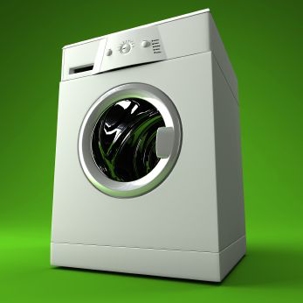Almost all responsible homeowners worry about their energy use. It’s estimated that 65% of our residential energy consumption goes to essential equipment operation, while a staggering 35% is wasted. All this unnecessary electrical usage is extremely bad for the plant, and basically amounts to throwing away money on the part of the homeowner. This is why so many people go around unplugging cords, trying to prevent their appliances from using “vampire power”—aka sucking electricity when they’re not even in use.
But what about those devices we have to use? Which everyday electrical appliances use the most power, and how can we reduce the amount of energy they waste—if that’s even possible? Keep reading for the information you need, courtesy of our expert electricians at Mel Carr Electric.
The Top 10 Energy-Consuming Appliances In Your Home:
1. HVAC System (Heating): Your heating and cooling equipment accounts for a whopping 47% of your home’s energy consumption. This might be surprising for those who live in climates where running the HVAC system is not necessary year-round, but even if you are running your HVAC equipment only part of the year it’s still going to use a ton of energy. The average American household spends roughly $662 a year on heating costs. This is to say nothing of cooling expenses, which brings us to the second entry on this list…
2. HVAC System (Cooling): Most American homes spend about $394 a year on air conditioning/cooling. So what can you do about the $1000-plus cost of operating your HVAC system? Put simply, just don’t use it as much—or at least, be smarter about how you use it. A lot of Americans crank their AC as low as it can go once heat builds up in their home, even though you’d be better off letting your system run all day at a lower temperature. People also think they should turn their thermostat up during the winter to work with their furnace/heating system, but the opposite is actually true. Your thermostat should be lower in the winter in the summer and higher in the summer, to balance out your energy costs. You may also want to consider buying a few fans or an eco-friendly space heater if you think you can get by with less heavy duty heating/cooling equipment. Bottom line: most of us use our HVAC systems too much, and both our wallets and the planet would be better off if we pulled back a bit.
3. Water Heater: A huge jump down from HVAC equipment, water heaters account for about 14% of most home’s total energy usage. But obviously, you need hot water, and unlike your HVAC equipment, you cannot just turn your water heater off and on to suit the climate. What you can do, however, is conserve water in general. It’s a well-known fact that Americans waste a staggering amount of water (about one trillion gallons cumulatively,) and with $317 in energy costs going to the average homeowner’s water heater specifically, it’s smart to turn the tap off whenever possible.
4. Washer & Dryer: Right behind your water heater on the list of energy-sucking appliances is another water-related combo—your washer and dryer. Accounting for 13% of home energy use and costing roughly $143 a year to operate, your washer and dryer are obviously important devices. That said, if you find yourself doing loads of laundry that only have a few pieces of clothing, you may be able to save a nice chunk of change by holding off awhile. You don’t necessarily have to wear dirty shirts and pants or go back to the old clothesline method, but don’t do a whole cycle just for your favorite pair of underwear either.
5. Lighting: Lighting accounts for 12% of Americans’ home energy consumption, though calculating the cost per household can be difficult. With traditional light bulbs, you can easily spend over $100 a year on lighting—especially if you keep the lights on all the time. However, if you use electrician-recommended, energy-efficient LED bulbs in your lamps and light fixtures, you can reduce your annual lighting costs to as little as $28 a year.
6. Refrigerator: Another good jump down percentage-wise, your fridge uses about 4% of your home’s electricity annually, and costs about $95 to operate on a yearly basis. Is there anything you can do to reduce this cost? Unless you buy an icebox, probably not, though you may be able to cut refrigerator costs slightly by upgrading to a more energy-efficient model or reducing the amount of items you keep in the fridge at one time, so it doesn’t have to work as hard.
7. Electric Oven: Electric ovens cost $90 a year to operate if we’re going by the metric of one hour at 350 degrees. Overall, they account for somewhere between 3-4% of your home electricity usage. Gas ovens tend to be more energy-efficient, and some homeowners simply prefer the heat level/usability of a gas oven/stove. But in general, the cost of operating a gas versus an electric oven is negligible.
8. Entertainment System: Your TV, DVD/Blu-Ray player, cable box, DVR, and game station are responsible for just 3% of your home’s power consumption. These systems cost about $57 a year to operate (minus any subscriptions, of course,) which isn’t much in the grand scheme of things, although it is worth noting that they do often suck phantom or “vampire” power. But if your mom/spouse tells you you’re wasting energy playing video games, she’s really only correct in a partial sense.
9. Dishwasher: Of water-using appliances in your household, your dishwasher is surprisingly cheap to operate. It takes up just 2% of your home’s total energy and costs about $49 a year to run, even if you are using it on a weekly/nightly basis. You should still limit dishwasher use somewhat for water conservation, but it’s preferable to running the tap for long periods of time.
10. Computer: Yes, Americans spend too much time on their computers. But while the digital age has changed a lot of things in our homes, in the grand scheme, it hasn’t been too hard on our utilities. Most computers account for only 1% of home energy use, and even if this sounds like a lot to you, it really isn’t when you take into account how much we use these devices, and the $28 per year in electricity they cost us.
Make sure your electrical system is as energy-efficient as possible today! Call (518) 500-3042 to request service or send us a message us online.

